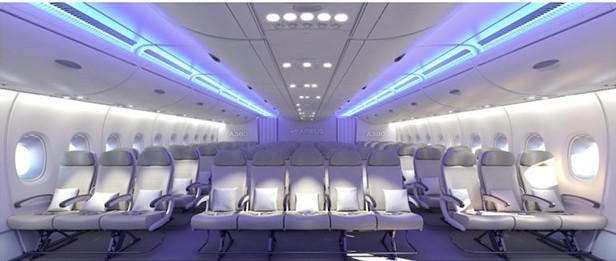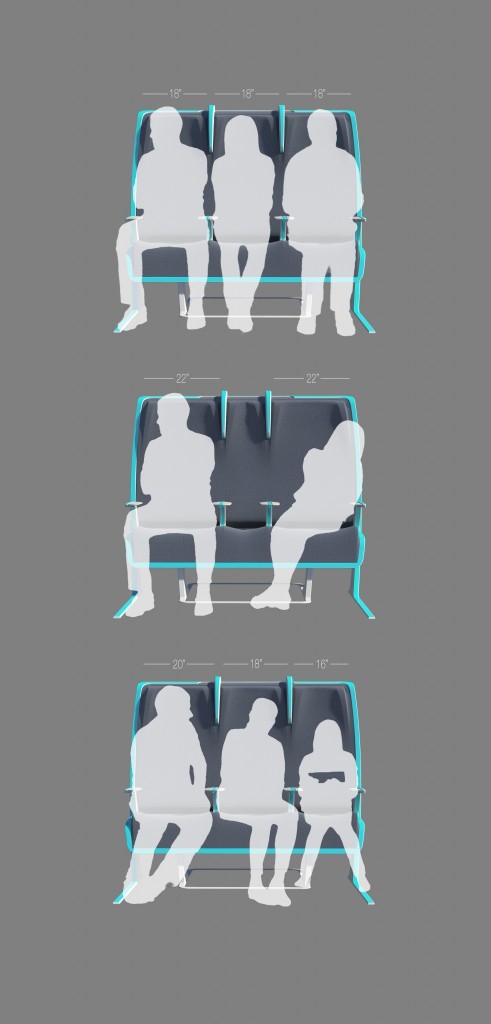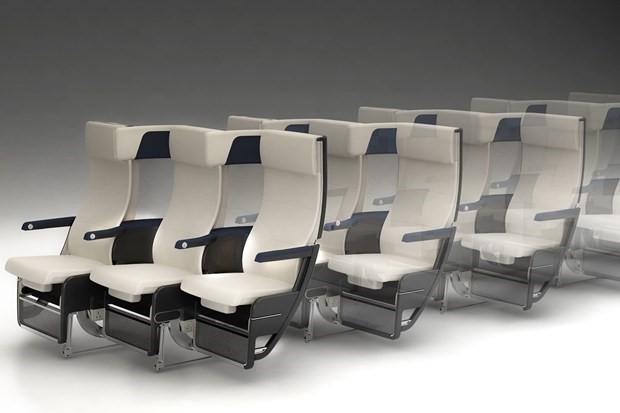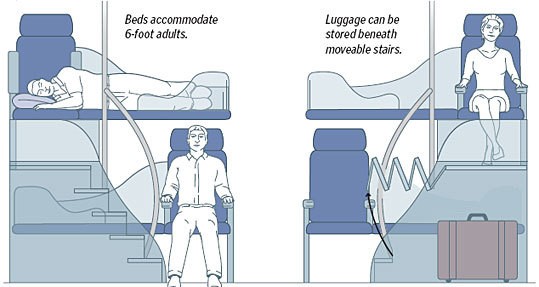When was the last time you flew, short or long distance? Were the seats big enough, and did you have enough leg room? My guess is, “no”.
Alas; I think I’d better stop complaining, because some concepts of the future of economy class seating will make today’s air travel conditions seem like sheer luxury by comparison.
If some less appealing designs ideas come to fruition, then flying for those of us consigned to coach is going to be somewhat akin to traveling “steerage” in the hold of a cargo ship across the Atlantic. Crowded, extremely uncomfortable, up close and far too personal with your neighbor, and all in the name of airlines trying to make an extra buck.
But before diving into future designs, let’s get to know a little about contemporary seat design terminology so that the new concepts can be understood in context.
Seat “pitch” is the space between a point on one seat and the same point on the seat in front of it. The standard pitch in Economy class is 30 to 32 inches (76 to 81 cm). More seat pitch means more legroom.
The seat pitch on low cost carriers can be as low as 28 inches (71 cm) but is typically either 29 inches (74 cm) or 30 inches (76 cm).
The largest seat pitch in any commercial airline’s short-haul economy section is 36 inches (91 cm). American Airlines’ business class seats in their Boeing 767-200s are 62 inches (160 cm), while US Airways’ first class flatbed seats in their Airbus A330-300s have a seat pitch of 94 inches (240 cm).
Seat width is the distance from armrest to armrest; in Economy class this is typically around 17–18 in (43-46 cm).
A new seating configuration that removes that middle seat in favor of one that faces the rear has been proposed by Zodiac Seats France. It is called “Economy Class Cabin Hexagon,” and is based on a honeycomb layout, which puts your neighbor looking directly at you – for hours!
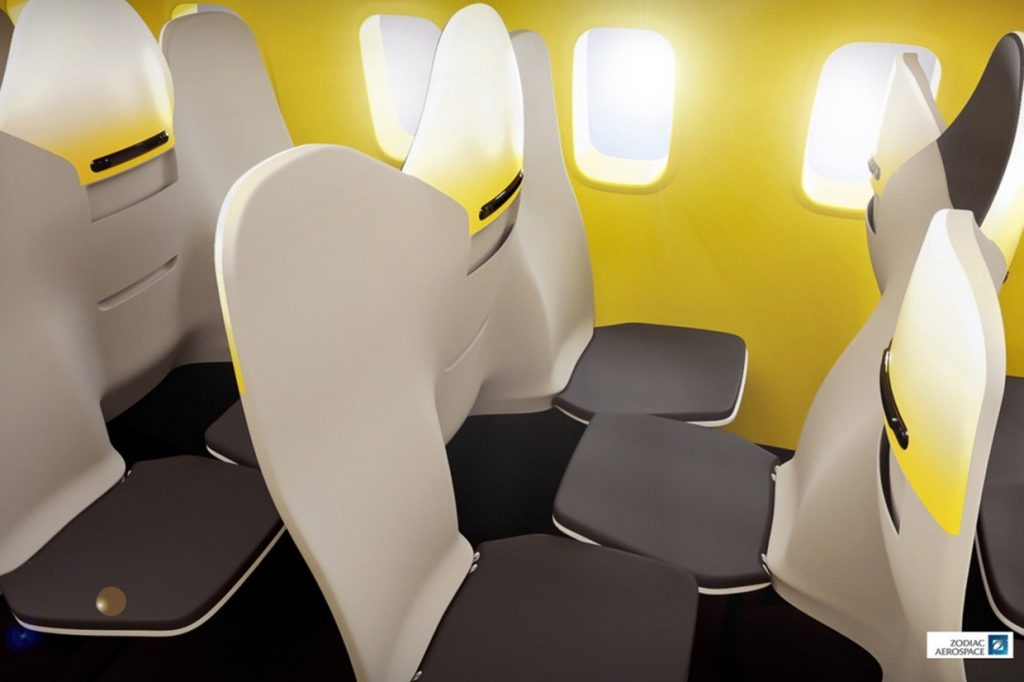
The design goal was “to increase cabin density while also increasing the space available for shoulders and arms.” As you’re now facing a different direction to your immediate neighbor it seems to achieve that at least. But seat neighbors can often be less than desirable, especially if you have to sit facing them close-up for hours on end.
British Airways, in turn, proposes introducing a configuration similar to Zodiac’s idea, but with privacy screens to ensure each passenger has a small area to call their own.
China’s Spring Airlines however, has a far more horrid solution; one truly devised in Dante’s nine circles of suffering – standing flights. Their pitch is: “For a lower price, passengers board a plane like a bus, with no seats, no luggage consignment, no food, and no water. It will be very convenient.”
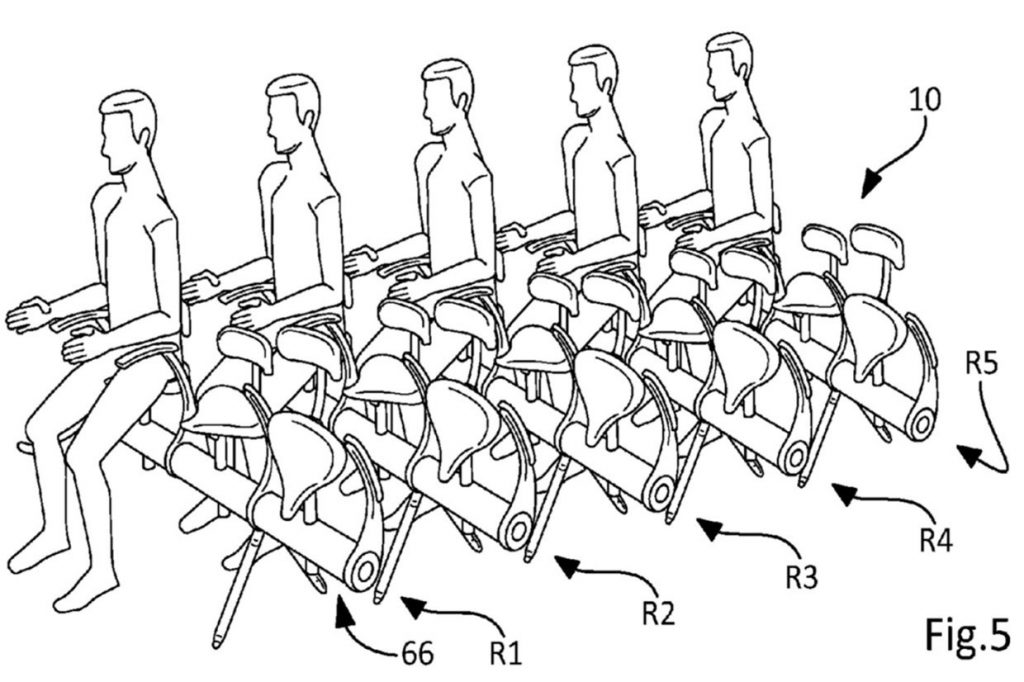
By shoveling passengers onto a plane like a rush-hour subway carriage, the airline will be able to squeeze in 40% more people. They will still have to wear safety belts, however, although it sounds like they’ll be strapped in, fastened around the waist somewhat uncomfortably to something resembling a bicycle stand.
As an additional way to pack more paying passengers into an aircraft, Airbus also came up with a cabin concept that showed an A380 with 11 seats packed into every row — five in the middle and three on each side with existing seats being slightly smaller.
Credit: Airbus
But don’t panic: all these design plans are still in the conceptual stages.
The following ideas are also still in the conceptual stage, even though most travelers are probably ready for these to become common aspects of air travel:
Seymour Powell, a British company, has designed Morph seating – width-adjustable seats for larger or smaller passengers allowing individuals to make personal, ergonomic adjustments.
Credit: Seymour Powell
Thompson Aero Seating proposes staggering every seat in a row, eliminating the undesirability of the middle seat, giving every passenger their own space.
Credit: Thompson Aero Seating
Now, here’s a really cool economy seat concept. One that would ensure a lot of private space for passengers and even increase the number of passengers on board by 30%:
The Air Lair is a personal cocoon for each passenger in a double-decker configuration. Within this enclosed environment, the passenger can control their own personal space without disturbing other passengers. Strategically placed lighting is used to set the mood, while an over-head projector provides the entertainment, and ergonomically designed lay-flat seat provides the comfort. Factorydesign have made the “Air Lair” really look like the future of travel.
Credit: factorydesign
Another innovative seating design comes from Jacob-Innovations. The “step seat principle” involves elevating alternate rows of seats, from one to five steps above the cabin floor, to give economy class passengers room to lean back by up to a 45-degree and enough space in business class to lie down completely.
Credit: Jacob-Innovations
Elevating every other row of seats means the rows can be installed closer together than they currently are in business class or in premium economy, allowing more seats to fit in the same area. Adding an upper deck of seats increases seating capacity even more.
The future of flying economy can look bright or dismal, depending on which way the airlines decide to go.
While some of these concepts seem to be threatening a future of discomfort, irritability and stress, many of them actually promise the exact opposite.

